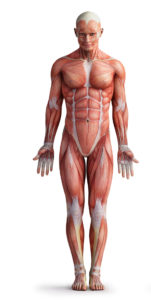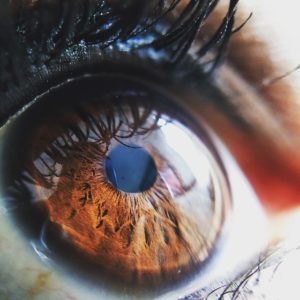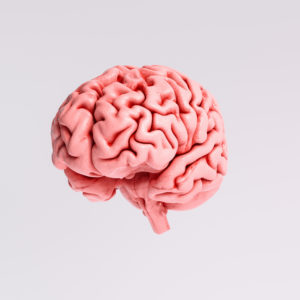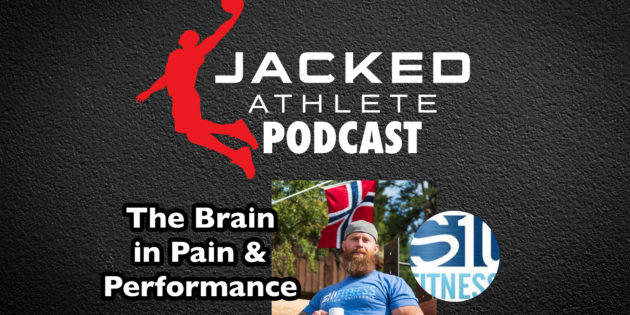https://podcasts.apple.com/us/podcast/jacked-athlete-podcast/id1462537296

The Systems
“Without a vestibular system, you cannot control your limbs and eyes.”
“Without a visual system, you are having a hard time planning.”
“Without both, all of our voluntary movements are kind of disrupted.”
“It’s more about congruency than anything. So if you’re not performing with your eyes, ears, and body, threat or pain can be present.”
Pain
“Pain lives in the brain, not actually in the joint.”
“I think if people just moved a little more cat-like with some vision, vestibular, proprioceptive drills, we’d have a lot less pain.”
Addressing the factors of pain neurologically: “It’s not 12-weeks to find out if you got better at squatting, it’s 12-seconds.”
“If you can’t move something, you need to do everything in your brain that replicates that movement.”
“Weakness is a by-product of inhibition… most people are operating at about 40% of their potential just to protect the structure of our bones and ligaments.”

Ocular-Motor Reflexes
“When the eyes look down without the head going down, you are engaging all of the flexion throughout the entire body.”
Looking up: “You are prepaying for all extension throughout the entire body globally.”
“You’re gonna see the upper echelon of athletes keeping their eyes on a visual target longer than most of the mid-level athletes.”
Vision
“Your reactions are based on you seeing it first, not necessarily feeling it first.”
“By moving your eyes, even if you’re not moving, you’re still training.”
Near-Far Drill: “The act of your eyes moving in together and then apart together is the basis of Flexion and Extension.”
“The better you get at your vision, the better you should expect to become in almost anything else you want to do.”
- Better depth perception
- Better musculature of the eye
- Motor control of the eye (and subsequently the limbs)
“Just a tiny bit of vision work and a little bit of balance work while you get big and buff… and I think you’ll be better off.”

Opposing Joints
“If I am taking my left elbow and putting it into deep, deep flexion… I am up regulating the opposing action of that which is right knee extension.”
“Flexion will create extension in the opposing joint on the opposing side… it’s a way to manually override your perceived inhibitions that are governed back to your CNS.”
Walking
Gameplay and weight training are intense but “you’re not gonna beat the sheer volume of what a life can ever provide for you.”
200 lbs. and each step is 1.2 times bodyweight. 10,000 steps per day. 2,400,000 of force going through the tissues.
500 lbs. back squat for 5 sets 5 reps. 12,500 pounds moved.
“If I can clean up an athlete’s locomotive patterns to where their vision is planning better, their vestibular system is balancing their right and left so it’s more symmetrical and less tense, and they’re walking comfortably through a proper gait function then my 2,400,000 pounds of force is going to keep the suppleness and the strength to the tissue predominantly more consistent than the 500 5×5 set of squats.”
“You have a better chance of changing a problem by helping a walk than you maybe do with almost any amount of voluntary exercise that does not correlate to gait.”

Other Factors
“You’re renting space in your brain for whatever you’re doing the most and nothing is permanent.”
“You can follow lines of success but you can’t mirror them. You’re not that person. You don’t see what Mike sees. You don’t feel what he feels.”
“Sometimes RDLs are the last thing an athlete needs because they are vestibularly challenged or they have some kind of prioprioceptive disconnection between their pelvic position. And maybe they should be doing GHRs. Maybe they should be doing straight up hamstring curls.”
“You have to take into consideration that there are other factors in play other than that they’re just weak.”
“If he’s dealing with a balance issue, if he’s dealing with a vision issue, there is no cue in the world that can beat that until you actually address it.”
“If you don’t like it or if it doesn’t interest you, your brain is not even going to marginally going to adopt the change. There has to be enough load to produce a neuroplastic change and there has to be enough demand for you to see it getting better.”

Links
S10 Fitness Instagram: https://www.instagram.com/s10fitness/



